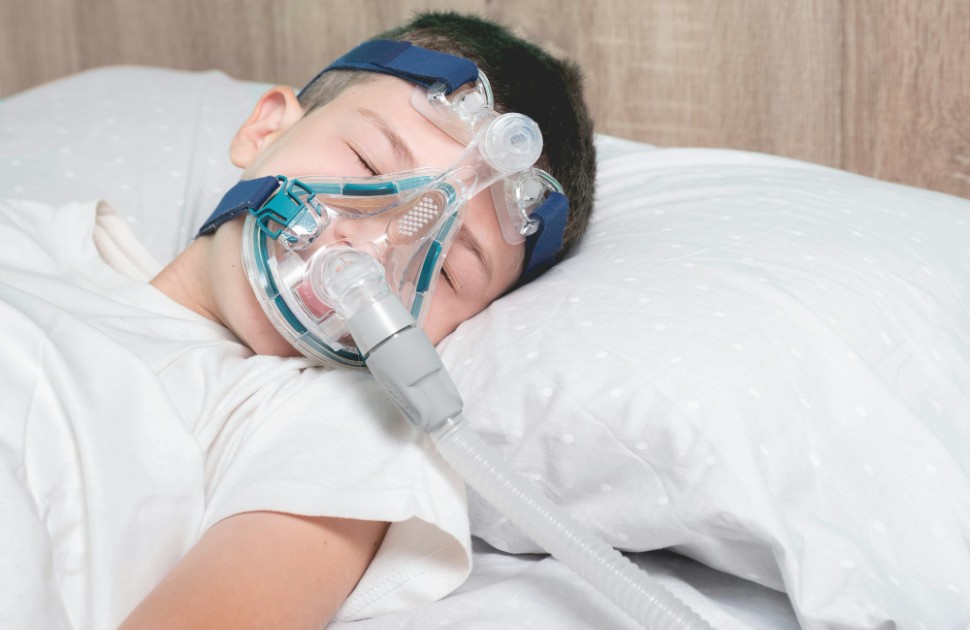
For best results make sure background graphics are enabled.
This guide is not meant to replace the instructions packaged with your child’s mask and equipment. They have important safety warnings and instructions that should be read and followed.
Any problems encountered during treatment should be discussed with your child’s doctor.
What are CPAP/BiPAP® Masks?
PAP machines deliver a stream of heated, humidified and compressed air through a hose to a contoured mask worn over the nose or over the nose and mouth. The masks are secured to your child with attached elastic headgear.
The equipment generally includes:
- Flow generator (PAP machine): Provides continuous flow of pressurized air (measured in cmH2O).
- Power supply unit/cord: Most PAP devices are easily portable but need electricity. Those who need PAP therapy during awake times or around-the-clock may need a more advanced device (home ventilator) with an internal battery for portable use.
- Water chamber/humidifier: Adds moisture and heat to inhaled air. Using heated humidified air improves most children’s comfort and reduces side effects such as nose bleeds, dry mouth, voice changes, cough and congestion.
- Air filter: Needs to be changed regularly. Please follow the guidelines given by your homecare company and user manual.
- Hose/tubing: Tubing can be standard (non-heated) or heated. Heated tubing contains a heating coil to maintain air temperature and decrease condensation.
- Mask: For non-invasive ventilation to be effective, a good mask fit and seal are crucial. There are two types of PAP masks that a sleep specialist may offer based on your child’s needs and preferences:
◦ Nasal mask: Covers the nose only.
◦ Oronasal mask (full face mask): Covers the mouth and nose
Care and Maintenance
The PAP mask and hose should be washed weekly with gentle soap and warm water. The mask cushion should be wiped daily. The PAP mask and tubing should be checked for damage or leaks regularly and replaced if found. Headgear should be washed as needed by hand.
Do not clean the mask with bleach or alcohol containing solutions or solutions containing conditioners or moisturizers.
Troubleshooting
- The PAP mask should be comfortable and fit your child’s face properly. It should not leak excessive air when attached to the hose and compressor. Noise that disrupts sleep is usually a sign of an excessive air leak.
- A too-loose mask leads to ineffective pressure delivery, excessive air leaks and may come off during sleep.
- A too-tight mask leads to air leaks through distortion of the mask. Too much pressure on the skin and facial bones also may increase the risk of skin breakdown – such as sores – and mid-face deformity.
- Protective barriers for skin may be considered if there is skin irritation.
For more instructions, please see the resources below, or contact your home care company for more help.
Specific Mask Care
These videos are not meant to replace the user instruction manual. Refer to your manual or contact your care provider if you have any questions about your device or treatment.
| Respireo Soft Child Mask |
|
How to fit and clean the mask: |
| WISP Pediatric Nasal Mask |
|
How to fit: How to clean: |
| WISP Nasal Mask |
|
How to fit:
How to clean:
|
| AirFit N20 Nasal Mask |
|
How to fit: How to clean: |
| AirFit F20 Full Face Mask |
|
How to fit: How to clean: |




